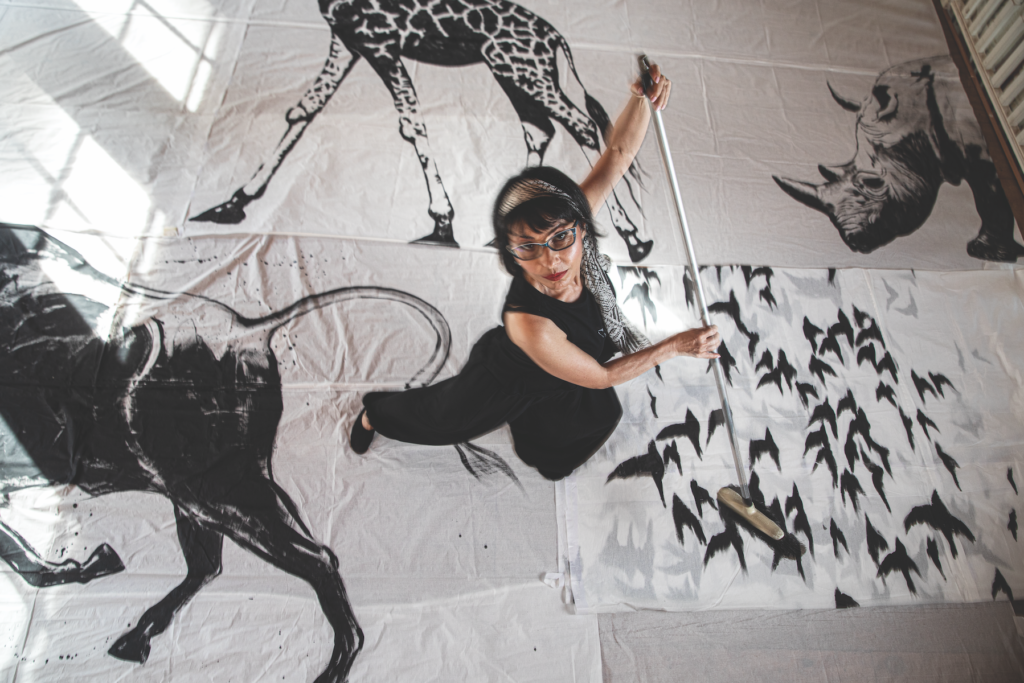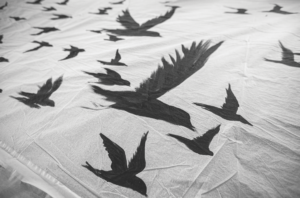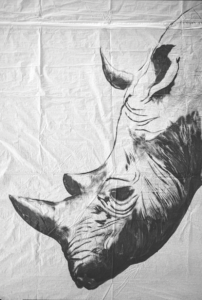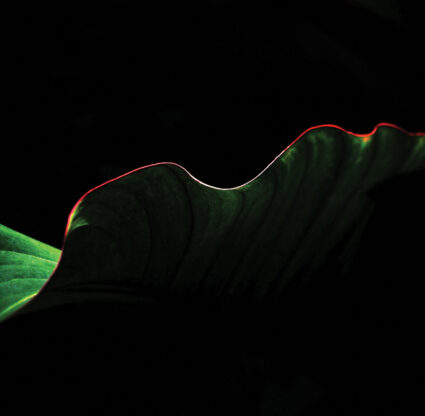Mariapia Malerba had always fantasized about having her dream studio.
It would be a wide space, much bigger than her in-home studio, where she has to move furniture to different corners of the room in order to create enough floor space to work on her paintings. The space would overlook a body of water, like a river or an ocean, and be tucked between a forest of plants and trees, where big windows faced the beauty of nature and soaked the room in natural light.
This dream studio would inspire her, influencing her artwork in unimaginable ways. But for years, that’s all it was: a dream. Until February.
 That’s when her husband, scrolling through the online real estate database Zillow, stumbled upon a historic property built in the 1920s. It was a home in Fort Myers, right along the Caloosahatchee River, surrounded by tropical flowers and lush trees. Rooted behind the house was a 1,200-square-foot, two-story building with wood-paneled walls and floor-to-ceiling windows.
That’s when her husband, scrolling through the online real estate database Zillow, stumbled upon a historic property built in the 1920s. It was a home in Fort Myers, right along the Caloosahatchee River, surrounded by tropical flowers and lush trees. Rooted behind the house was a 1,200-square-foot, two-story building with wood-paneled walls and floor-to-ceiling windows.
The couple made an appointment two days later to see the property, and soon after, they bought it. “I have days where I still think I’m dreaming,” the renowned Fort Myers artist says. “That’s the dream place.”
Raised in Puglia, Italy, Malerba has been a staple in the Southwest Florida arts community since she moved here in 2009. She’s known for her talents in fashion, painting, installation and theatrical set design.
Much of her creative process derives from random fits of inspiration. Take her most recent exhibit, Shodopia, for example. It featured Malerba’s spin on shodo, the Japanese art of calligraphy. Earlier this year, the gallery walls at The Sidney & Berne Davis Art Center were lined with 208 linear feet of white panels painted with thick black brush strokes from the soft bristles of a broom.
 Malerba was inspired to create Shodopia after a failed road trip with her family. They rented an R.V., and had planned to drive cross-country to visit multiple national parks in Utah, but the R.V. broke down, and they were stuck in torrential downpours. On the way back home, driving through dangerous weather, Malerba heard a piece of music on the radio that inspired her. “I started dreaming in the middle of that craziness, thinking about painting as I interpreted the music, moving with the rhythm, painting on a canvas,” she says. “To create something with a broom—something that could easily create a mistake or sloppiness—it breaks the rigidness of the rules, since I’m not capable of doing it perfectly.”
Malerba was inspired to create Shodopia after a failed road trip with her family. They rented an R.V., and had planned to drive cross-country to visit multiple national parks in Utah, but the R.V. broke down, and they were stuck in torrential downpours. On the way back home, driving through dangerous weather, Malerba heard a piece of music on the radio that inspired her. “I started dreaming in the middle of that craziness, thinking about painting as I interpreted the music, moving with the rhythm, painting on a canvas,” she says. “To create something with a broom—something that could easily create a mistake or sloppiness—it breaks the rigidness of the rules, since I’m not capable of doing it perfectly.”
Inspiration is a critical factor in Malerba’s creative process. But so is space. She’s never truly had her own studio like she does now. For her entire life, she’s grown accustomed to creating art with restrictions on time, space and cleanliness. “Now I have freedom,” Malerba says. “It’s going to be amazing, but it’s a little intimidating, too.”
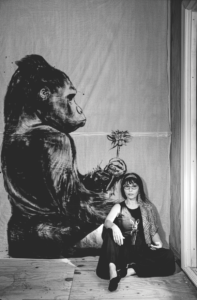 With Shodopia, every panel was 9 feet by 12 feet. To produce each one, Malerba first had to move the furniture out of the way in her living room, prep the floor so she wouldn’t make a mess, create her art, move the furniture back, and carefully clean up after herself—every time. “I had to do so much work just to make things happen,” she says. “I had to do a lot of planning, and a lot of organization.” But this is how it’s always been.
With Shodopia, every panel was 9 feet by 12 feet. To produce each one, Malerba first had to move the furniture out of the way in her living room, prep the floor so she wouldn’t make a mess, create her art, move the furniture back, and carefully clean up after herself—every time. “I had to do so much work just to make things happen,” she says. “I had to do a lot of planning, and a lot of organization.” But this is how it’s always been.
During her upbringing in Puglia, Malerba’s mother was obsessed with cleanliness and order. She disliked her daughter experimenting with any type of art projects in the house, whether that was painting or sewing textile designs. Whenever her mother left for an errand, Malerba would rush to create. She’d take out the sewing machine and fabric, drape it over her body in front of a mirror as if she were the mannequin, and make a skirt in two hours, then meticulously put everything away. Or she’d organize her colors, water, easel and canvas, paint without worrying about perfection, then clean up the evidence before her mother returned.
These restrictions taught her invaluable lessons, and allowed her to create simply. “I learned to create even when I’m not so creative,” Malerba says. “It’s about discipline. Sometimes it comes out beautiful. Sometimes it surprises me. Sometimes it’s not what you want. Sometimes it’s awesome. But it’s all a process.”
That’s why there’s so much excitement, some of it daunting, surrounding her new studio. Because finally, there are no restrictions. “One could say, ‘It’s totally easy for you to create now,’” Malerba says, as she gets ready to move into the new space this fall. “Could that be something that I don’t know how to approach? Maybe it’s too much in the beginning? It’s all the freedom I’ve never had. I’m excited to see the other side of myself—the other side that’s going to experience something that’s completely new for me.”
Malerba wonders if she’ll still be super organized, or if her creative process will be more messy, free and loose. Above all, she’s curious how this will influence her work. She’s invited a handful of artists to paint the wood floor of her studio—all 1,200 square feet—with a graffiti-type mural to bring her studio alive.
As for her next project, Malerba isn’t certain what’s to come. “Of course, I have ideas,” she says. “But I want to see what the space is going to tell me to do. It happens all the time, and when the answer doesn’t come immediately, that means you have to elaborate. It will come in some way.”
Photography by Zach Stovall

